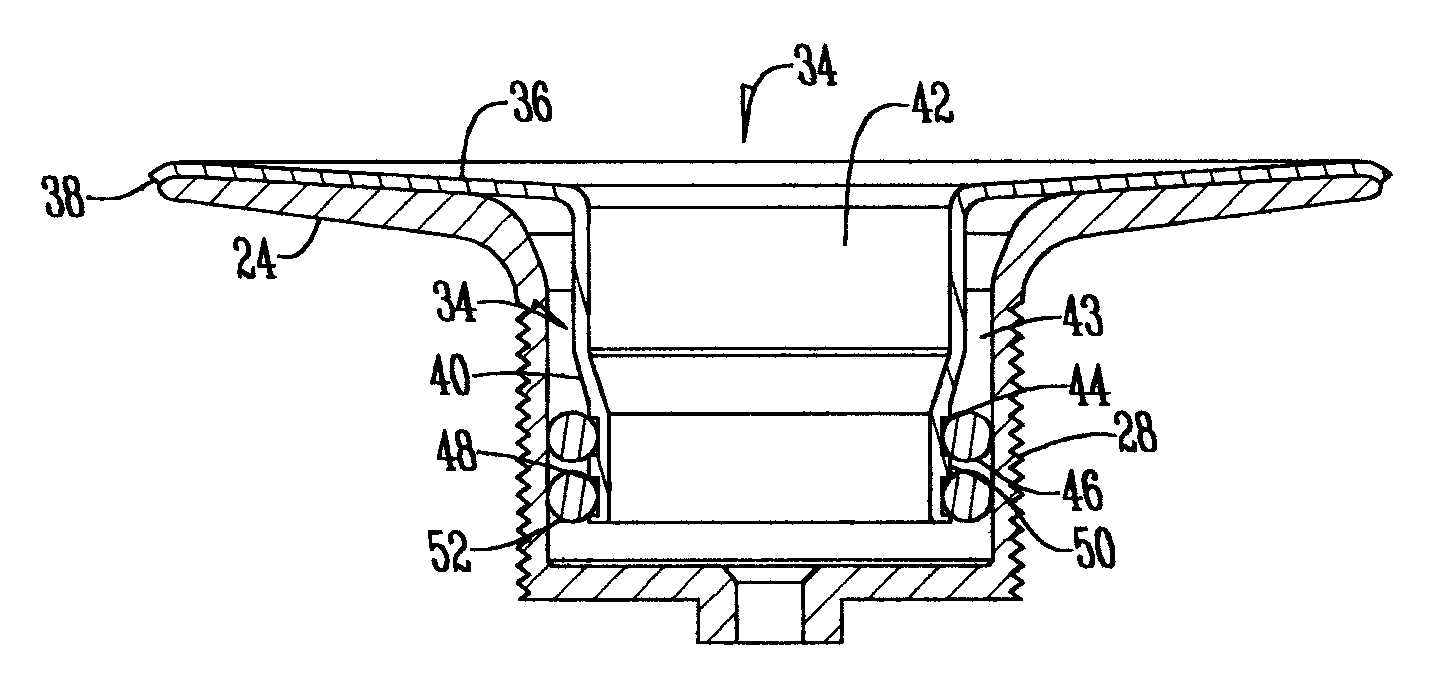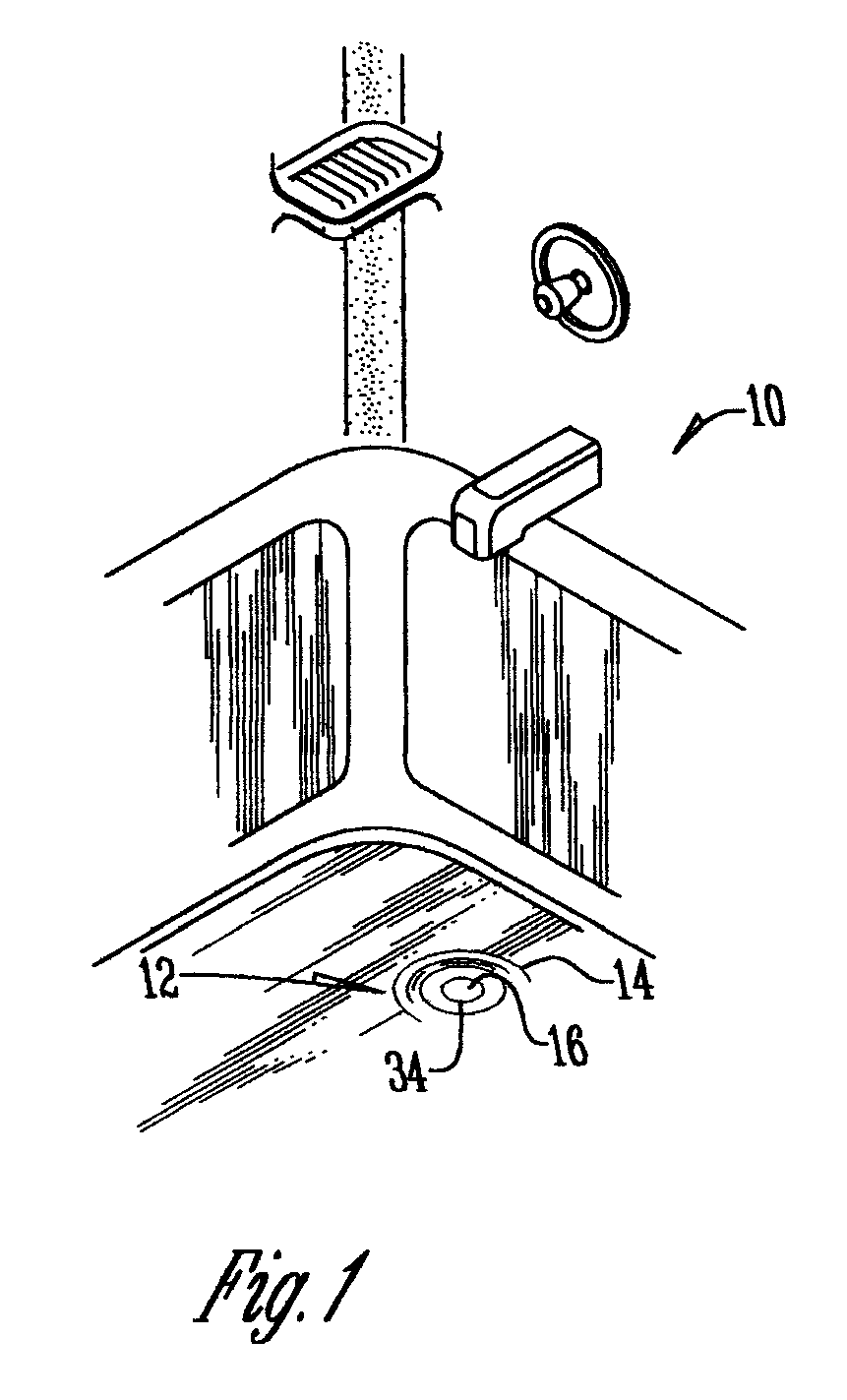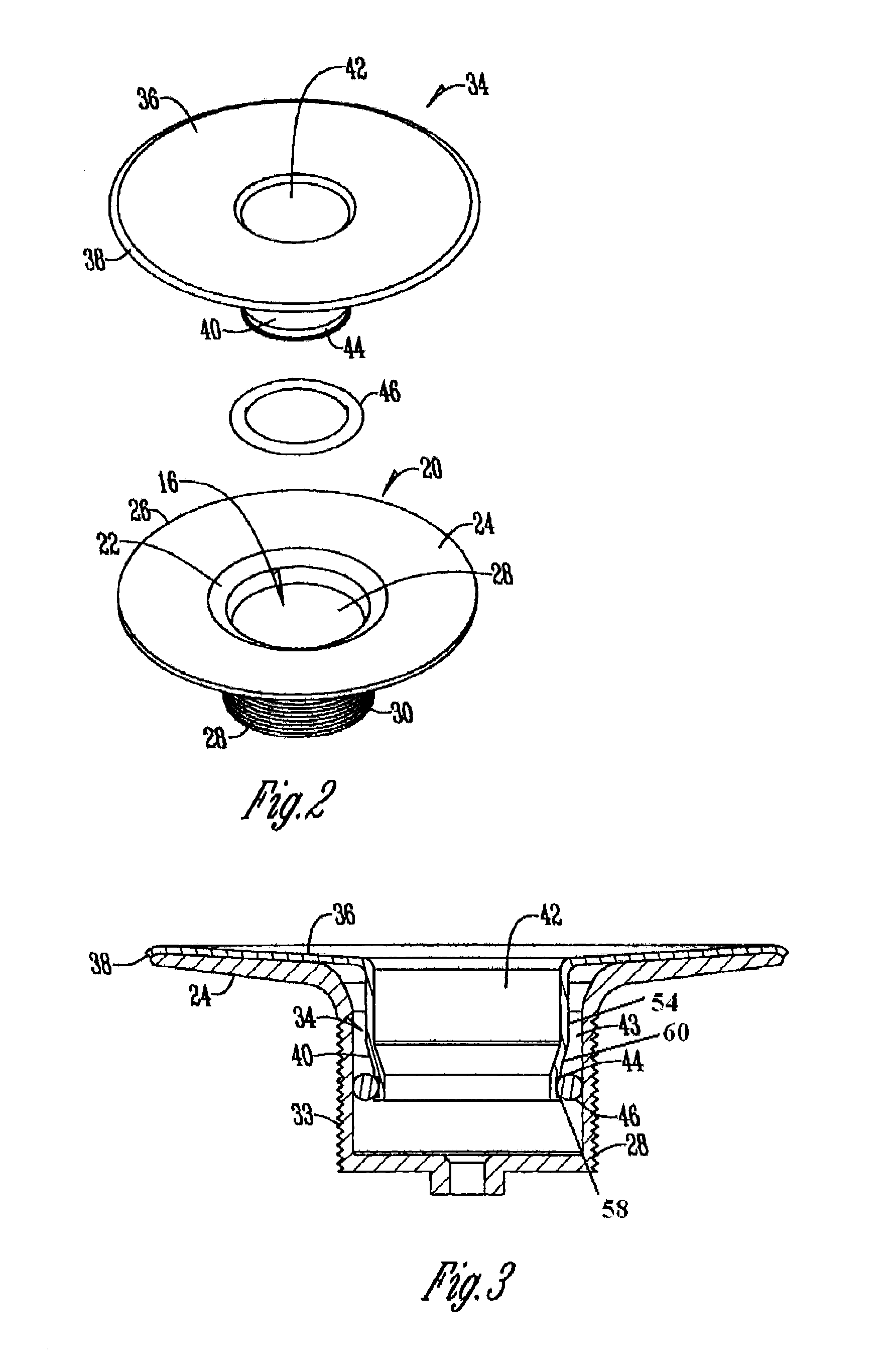Means for covering the flange of a waste water strainer
a waste water strainer and flange technology, which is applied in the direction of hose connections, washstands, mechanical equipment, etc., can solve the problems of insufficient use of conventional tools for strainer removal, incompatibility of replacement strainer threads with fittings or bushings, and often difficult task of strainer removal
- Summary
- Abstract
- Description
- Claims
- Application Information
AI Technical Summary
Benefits of technology
Problems solved by technology
Method used
Image
Examples
Embodiment Construction
[0014]The numeral 10 designates a fluid compartment or receptacle such as a tub or a sink. Compartment 10 has a bottom 12 with an interior bottom surface 14. A waste water aperture 16 is located in bottom 12.
[0015]A waste water strainer 20 is shown in FIG. 2. Strainer 20 has an upper end 22 from which a circular flange 24 extends. The outer perimeter 26 of flange 24 engages the interior bottom surface 14 (FIG. 1) surrounding aperture 16. The strainer 20 has a downwardly extending cylindrical wall 28 and external threads 30. The typical closure valves which may be associated with strainer 20 have not been shown.
[0016]The numeral 34 designates a waste water insert. Insert 34 has a flange 36 with the periphery thereof terminating in a downwardly extending lip 38. As best shown in FIG. 3, the lip 38 extends downwardly and over the outer perimeter 26 of flange 24 of strainer 20. The lip 38 engages the bottom 12 of compartment 10 when installed.
[0017]Insert 34 has a downwardly extending w...
PUM
 Login to View More
Login to View More Abstract
Description
Claims
Application Information
 Login to View More
Login to View More - R&D
- Intellectual Property
- Life Sciences
- Materials
- Tech Scout
- Unparalleled Data Quality
- Higher Quality Content
- 60% Fewer Hallucinations
Browse by: Latest US Patents, China's latest patents, Technical Efficacy Thesaurus, Application Domain, Technology Topic, Popular Technical Reports.
© 2025 PatSnap. All rights reserved.Legal|Privacy policy|Modern Slavery Act Transparency Statement|Sitemap|About US| Contact US: help@patsnap.com



